formerly eScholarship Editions


|
|
|
|
Your search for
'European History' in subject
found 218 book(s). | Modify Search | Displaying 101 - 120 of 218 book(s) | |
| 101. |  | Title: Broken tablets: the cult of the law in French art from David to Delacroix Author: Ribner, Jonathan P Published: University of California Press, 1993 Subjects: Art | Art History | French Studies | European Literature | European History | Law Publisher's Description: In this first study of art, law, and the legislator, Jonathan Ribner provides a revealing look at French art from 1789 to 1848, the period in which constitutional law was established in France. Drawing on several disciplines, he discusses how each of the early constitutional regimes in France used imagery suggesting the divine origin and sacred character of its laws.Primarily a study of art and politics, Broken Tablets discusses painting, sculpture, prints, and medals (many reproduced here for the first time), as well as contemporary literature, including the poetry of Alfred de Vigny, Alphonse de Lamartine, and Victor Hugo. Ribner assesses the ways in which legislation imagery became an instrument of political propaganda, and he clearly illuminates the cult of the law as it became personalized under Napoleon, monarchist under the Restoration, and defensive under Louis-Phillipe. [brief] Similar Items |
| 102. | 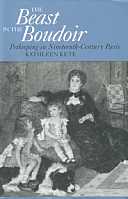 | Title: The beast in the boudoir: petkeeping in nineteenth-century Paris Author: Kete, Kathleen Published: University of California Press, 1994 Subjects: History | European History | French Studies | European Studies Publisher's Description: Kathleen Kete's wise and witty examination of petkeeping in nineteenth-century Paris provides a unique window through which to view the lives of ordinary French people. She demonstrates how that cliché of modern life, the family dog, reveals the tensions that modernity created for the Parisian bourgeoisie.Kete's study draws on a range of literary and archival sources, from dog-care books to veterinarians's records to Dumas's musings on his cat. The fad for aquariums, attitudes toward vivisection, the dread of rabies, the development of dog breeding - all are shown to reflect the ways middle-class people thought about their lives. Petkeeping, says Kete, was a way to imagine a better, more manageable version of the world - it relieved the pressures of contemporary life and improvised solutions to the intractable mesh that was post-Enlightenment France. The faithful, affectionate family dog became a counterpoint to the isolation of individualism and lack of community in urban life. By century's end, however, animals no longer represented the human condition with such potency, and even the irascible, autonomous cat had been rehabilitated into a creature of fidelity and affection.Full of fascinating details, this innovative book will contribute to the way we understand culture and the creation of class. [brief] Similar Items |
| 103. | 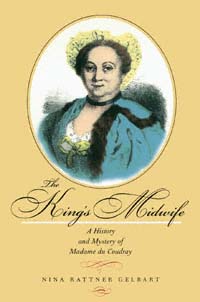 | Title: The king's midwife: a history and mystery of Madame du Coudray Author: Gelbart, Nina Rattner Published: University of California Press, 1998 Subjects: History | European History | Women's Studies | Autobiographies and Biographies | French Studies | History and Philosophy of Science | Medicine Publisher's Description: This unorthodox biography explores the life of an extraordinary Enlightenment woman who, by sheer force of character, parlayed a skill in midwifery into a national institution. In 1759, in an effort to end infant mortality, Louis XV commissioned Madame Angélique Marguerite Le Boursier du Coudray to travel throughout France teaching the art of childbirth to illiterate peasant women. For the next thirty years, this royal emissary taught in nearly forty cities and reached an estimated ten thousand students. She wrote a textbook and invented a life-sized obstetrical mannequin for her demonstrations. She contributed significantly to France's demographic upswing after 1760.Who was the woman, both the private self and the pseudonymous public celebrity? Nina Rattner Gelbart reconstructs Madame du Coudray's astonishing mission through extensive research in the hundreds of letters by, to, and about her in provincial archives throughout France. Tracing her subject's footsteps around the country, Gelbart chronicles du Coudray's battles with finance ministers, village matrons, local administrators, and recalcitrant physicians, her rises in power and falls from grace, and her death at the height of the Reign of Terror. At a deeper level, Gelbart recaptures du Coudray's interior journey as well, by questioning and dismantling the neat paper trail that the great midwife so carefully left behind. Delightfully written, this tale of a fascinating life at the end of the French Old Regime sheds new light on the histories of medicine, gender, society, politics, and culture. [brief] Similar Items |
| 104. | 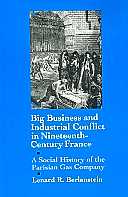 | Title: Big business and industrial conflict in nineteenth-century France: a social history of the Parisian Gas Company Author: Berlanstein, Lenard R Published: University of California Press, 1991 Subjects: History | European History | French Studies | Economics and Business | Technology and Society Publisher's Description: Founded in 1855, the Parisian Gas Company (PGC) quickly developed into one of France's greatest industrial enterprises, an exemplar of the new industrial capitalism that was beginning to transform the French economy. The PGC supplied at least half the coal gas consumed in France through the 1870s and became the city's single largest employer of clerical and factory labor. Representing a new form and scale of capitalistic endeavor, the firm's history illuminates the social tensions that accompanied the nation's industrialization and democratization.To study the company over its fifty-year life is to see industrializing France writ small. Using previously untapped company archives, Lenard R. Berlanstein has written a rich and detailed study that skillfully bridges the divide between business, social, and labor history. [brief] Similar Items |
| 105. |  | Title: Venice's hidden enemies: Italian heretics in a Renaissance city Author: Martin, John Jeffries Published: University of California Press, 1993 Subjects: History | European History | Christianity | Renaissance History Publisher's Description: How could early modern Venice, a city renowned for its political freedom and social harmony, also have become a center of religious dissent and inquisitorial repression? To answer this question, John Martin develops an innovative approach that deftly connects social and cultural history. The result is a profoundly important contribution to Renaissance and Reformation studies.Martin offers a vivid re-creation of the social and cultural worlds of the Venetian heretics - those men and women who articulated their hopes for religious and political reform and whose ideologies ranged from evangelical to anabaptist and even millenarian positions. In exploring the connections between religious beliefs and social experience, he weaves a rich tapestry of Renaissance urban life that is sure to intrigue all those involved in anthropological, religious, and historical studies - students and scholars alike. [brief] Similar Items |
| 106. |  | Title: Sonia's daughters: prostitutes and their regulation in imperial Russia Author: Bernstein, Laurie Published: University of California Press, 1995 Subjects: History | European History | European Studies | Women's Studies | Russian and Eastern European Studies Publisher's Description: Prostitution in Imperial Russia was so tenacious that it survived not only the tsarist regime's most tumultuous years but the Bolshevik revolution itself. Laurie Bernstein's comprehensive study is the first to look at how the state and society responded to the issue of prostitution - the attitudes of prostitutes themselves, state regulation, societal reactions, and attempts at reform. She finds that prostitution and its regulation were integral to Russia's structures of gender, class, and politics.The first historian from outside the former Soviet Union to be granted access to these archival materials on prostitution, Bernstein takes the reader to the streets of Russia's cities, to the state-licensed brothels, medical clinics, hospital wards, halfway houses for "fallen women," and to the highest circles of the tsarist administration. [brief] Similar Items |
| 107. |  | Title: The rise of the Paris red belt Author: Stovall, Tyler Edward Published: University of California Press, 1990 Subjects: History | European History | Social Science | French Studies Publisher's Description: From 1920 until the present, the working-class suburbs of Paris, known as the Red Belt, have constituted the heart of French Communism, providing the Party not only with its most solid electoral base but with much of its cultural identity as well. Focusing on the northeastern suburb of Bobigny, Stovall explores the nature of working-class life and politicization as he skillfully documents how this unique region and political culture came into being. The Rise of the Paris Red Belt reveals that the very process of urban development in metropolitan Paris and the suburbs provided the most important opportunities for the local establishment of Communist influence.The rapid increase in Paris' suburban population during the early twentieth century outstripped the development of the local urban infrastructure. Consequently, many of these suburbs, often represented to their new residents as charming country villages, soon degenerated into suburban slums. Stovall argues that Communists forged a powerful political block by mobilizing the disillusionment and by improving some of the worst aspects of suburban life.As a social history of twentieth-century France, The Rise of the Paris Red Belt calls into question traditional assumptions about the history of both French Communism and the French working-class. It suggests that those interested in working-class politics, especially in the twentieth century, should consider the significance of residential and consumer issues as well as those relating to the workplace. It also suggests that urban history and urban development should not be considered autonomous phenomena, but rather expressions of class relations. The Rise of the Paris Red Belt brings to life a world whose citizens, though often overlooked, are nonetheless the history of modern France. [brief] Similar Items |
| 108. | 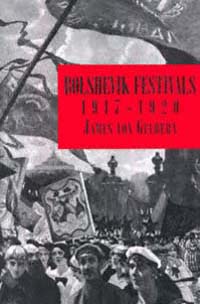 | Title: Bolshevik festivals, 1917-1920 Author: Von Geldern, James Published: University of California Press, 1993 Subjects: History | European History | European Literature | Russian and Eastern European Studies Publisher's Description: In the early years of the USSR, socialist festivals - events entailing enormous expense and the deployment of thousands of people - were inaugurated by the Bolsheviks. Avant-garde canvases decorated the streets, workers marched, and elaborate mass spectacles were staged. Why, with a civil war raging and an economy in ruins, did the regime sponsor such spectacles?In this first comprehensive investigation of the way festivals helped build a new political culture, James von Geldern examines the mass spectacles that captured the Bolsheviks' historical vision. Spectacle directors borrowed from a tradition that included tsarist pomp, avant-garde theater, and popular celebrations. They transformed the ideology of revolution into a mythologized sequence of events that provided new foundations for the Bolsheviks' claim to power. [brief] Similar Items |
| 109. | 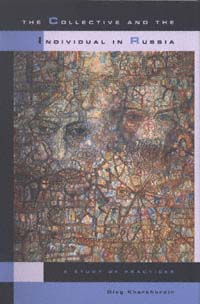 | Title: The collective and the individual in Russia: a study of practices Author: Kharkhordin, Oleg 1964- Published: University of California Press, 1999 Subjects: History | Social Theory | European History | Russian and Eastern European Studies | Intellectual History Publisher's Description: Oleg Kharkhordin has constructed a compelling, subtle, and complex genealogy of the Soviet individual that is as much about Michel Foucault as it is about Russia. Examining the period from the Russian Revolution to the fall of Gorbachev, Kharkhordin demonstrates that Party rituals - which forced each Communist to reflect intensely and repeatedly on his or her "self," an entirely novel experience for many of them - had their antecedents in the Orthodox Christian practices of doing penance in the public gaze. Individualization in Soviet Russia occurred through the intensification of these public penitential practices rather than the private confessional practices that are characteristic of Western Christianity. He also finds that objectification of the individual in Russia relied on practices of mutual surveillance among peers, rather than on the hierarchical surveillance of subordinates by superiors that characterized the West. The implications of this book expand well beyond its brilliant analysis of the connection between Bolshevism and Eastern Orthodoxy to shed light on many questions about the nature of Russian society and culture. [brief] Similar Items |
| 110. | 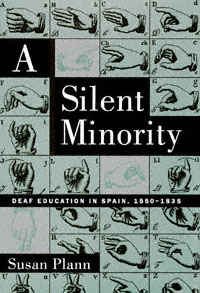 | Title: A silent minority: deaf education in Spain, 1550-1835 Author: Plann, Susan Published: University of California Press, 1997 Subjects: History | Language and Linguistics | Medieval History | European History | Education | European Studies | Medieval Studies | Cultural Anthropology | Cultural Anthropology Publisher's Description: This timely, important, and frequently dramatic story takes place in Spain, for the simple reason that Spain is where language was first systematically taught to the deaf. Instruction is thought to have begun in the mid-sixteenth century in Spanish monastic communities, where the monks under vows of silence employed a well-established system of signed communications. Early in the 1600s, deaf education entered the domain of private tutors, laymen with no use for manual signs who advocated oral instruction for their pupils. Deaf children were taught to speak and lip-read, and this form of deaf education, which has been the subject of controversy ever since, spread from Spain throughout the world.Plann shows how changing conceptions of deafness and language constantly influenced deaf instruction. Nineteenth-century advances brought new opportunities for deaf students, but at the end of what she calls the preprofessional era of deaf education, deaf people were disempowered because they were barred from the teaching profession. The Spanish deaf community to this day shows the effects of the exclusion of deaf teachers for the deaf.The questions raised by Plann's narrative extend well beyond the history of deaf education in Spain: they apply to other minority communities and deaf cultures around the world. At issue are the place of minority communities within the larger society and, ultimately, our tolerance for human diversity and cultural pluralism. [brief] Similar Items |
| 111. |  | Title: Romain Rolland and the politics of intellectual engagement Author: Fisher, David James Published: University of California Press, 1988 Subjects: History | European History Similar Items |
| 112. |  | Title: Merchants and reform in Livorno, 1814-1868 Author: LoRomer, David G Published: University of California Press, 1987 Subjects: History | European History Similar Items |
| 113. |  | Title: Emigrants and society: Extremadura and America in the sixteenth century Author: Altman, Ida Published: University of California Press, 1989 Subjects: History | European History | United States History Publisher's Description: The opening of the New World to Spanish settlement had more than the limited impact on individuals and society which scholars have traditionally granted it. Many families and young single people left the neighboring cities of Cáceres and Trujillo in the Extremadura region of southwestern Spain for the Indies. By maintaining ties with home and one another, and sometimes returning, these emigrants developed patterns of involvement that on one level were linked directly to place of origin and on another would come to characterize the emigration movement as a whole. Ida Altman shows that the Indies could and did have a substantial and perceptible effect on local society in Spain, as the New World quickly became an important arena of activity for people seeking new and better opportunities. Her findings suggest interesting conclusions regarding the relationship of sixteenth-century Spanish emigration to the larger movement of people from Europe to the Western Hemisphere in modern times. [brief] Similar Items |
| 114. |  | Title: A buccaneer's atlas: Basil Ringrose's South Sea waggoner: a sea atlas and sailing directions of the Pacific coast of the Americas, 1682 Author: Ringrose, Basil d. 1686 Published: University of California Press, 1992 Subjects: History | Renaissance History | European History | Geography Publisher's Description: On July 29, 1681, a band of English buccaneers that had been terrorizing Spanish possessions on the west coast of the Americas captured a Spanish ship, from which they obtained a derrotero , or book of charts and sailing directions. When they arrived back in England, the Spanish ambassador demanded that the buccaneers be brought to trial. The derrotero was ordered to be brought to King Charles II, who apparently appreciated its great intelligence value. The buccaneers were acquitted, to the chagrin of the king of Spain, who had the English ambassador expelled from the court at Madrid on a seemingly trumped-up charge.The derrotero was subsequently translated, and one of the buccaneers, Basil Ringrose, added a text to the compilation and information to the Spanish charts. The resulting atlas, consisting of 106 pages of charts and 106 pages of text, is published in full for the first time in this volume. Covering the coast from California to Tierra del Fuego, the Galapagos, and Juan Fernandes, Basil Ringrose's south sea waggoner is a rich source of geographical information, with observations on navigational, physical, biological, and cultural features as well as on ethnography, customs, and folklore.After almost exactly three hundred years, this secret atlas is now made available to libraries and individuals. The editors have provided an extensive introduction on historical, geographical, and navigational aspects of the atlas, as well as annotations to the charts and text, and they have plotted the coverage of the charts on modern map bases. [brief] Similar Items |
| 115. |  | Title: Weimar surfaces: urban visual culture in 1920s Germany Author: Ward, Janet 1963- Published: University of California Press, 2001 Subjects: Literature | Architecture | Film | European Studies | European History | Popular Culture Publisher's Description: Germany of the 1920s offers a stunning moment in modernity, a time when surface values first became determinants of taste, activity, and occupation: modernity was still modern, spectacle was still spectacular. Janet Ward's luminous study revisits Weimar Germany via the lens of metropolitan visual cu . . . [more] Similar Items |
| 116. | 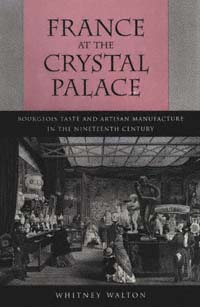 | Title: France at the Crystal Palace: bourgeois taste and artisan manufacture in the nineteenth century Author: Walton, Whitney Published: University of California Press, 1992 Subjects: History | European History | Women's Studies | French Studies Publisher's Description: Whitney Walton approaches the nineteenth-century French industrial development from a new perspective - that of consumption. She analyzes the French performance at the Crystal Palace Exhibition of 1851 to illustrate how bourgeois consumers influenced France's distinctive pattern of industrial development. She also demonstrates the importance of consumption and gender in class formation and reveals how women influenced industry in their role as consumers.Walton examines important consumer goods industries that have been rarely studied by historians, such as the manufacture of wallpaper, furniture, and bronze statues. Using archival sources on household possessions of the Parisian bourgeoisie as well as published works, she shows how consumers' taste for fashionable, artistic, well-made furnishings and apparel promoted a specialization unique to nineteenth-century France. [brief] Similar Items |
| 117. |  | Title: Fiction as history: Nero to Julian Author: Bowersock, G. W. (Glen Warren) 1936- Published: University of California Press, 1997 Subjects: Classics | Literature | European History | Classical Religions | Christianity | Ancient History Publisher's Description: Using pagan fiction produced in Greek and Latin during the early Christian era, G. W. Bowersock investigates the complex relationship between "historical" and "fictional" truths. This relationship preoccupied writers of the second century, a time when apparent fictions about both past and present were proliferating at an astonishing rate and history was being invented all over again. With force and eloquence, Bowersock illuminates social attitudes of this period and persuasively argues that its fiction was influenced by the emerging Christian Gospel narratives.Enthralling in its breadth and enhanced by two erudite appendices, this is a book that will be warmly welcomed by historians and interpreters of literature. [brief] Similar Items |
| 118. |  | Title: How fascism ruled women: Italy, 1922-1945 Author: De Grazia, Victoria Published: University of California Press, 1992 Subjects: History | European History | Women's Studies Publisher's Description: Italy has been made; now we need to make the Italians," goes a familiar Italian saying. Mussolini was the first head of state to include women in this mandate. How the fascist dictatorship defined the place of women in modern Italy and how women experienced the Duce 's rule are the subjects of Victoria de Grazia's new work. De Grazia draws on an array of sources - memoirs and novels, the images, songs, and events of mass culture, as well as government statistics and archival reports. She offers a broad yet detailed characterization of Italian women's ambiguous and ambivalent experience of a regime that promised modernity, yet denied women emancipation.Always attentive to the great diversity among women and careful to distinguish fascist rhetoric from the practices that really shaped daily existence, the author moves with ease from the public discourse about femininity to the images of women in propaganda and commercial culture. She analyzes fascist attempts to organize women and the ways in which Mussolini's intentions were received by women as social actors. The first study of women's experience under Italian fascism, this is also a history of the making of contemporary Italian society. [brief] Similar Items |
| 119. | 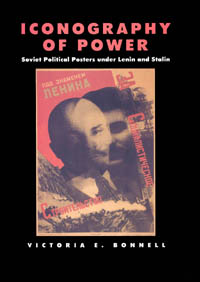 | Title: Iconography of power: Soviet political posters under Lenin and Stalin Author: Bonnell, Victoria E Published: University of California Press, 1998 Subjects: Sociology | Popular Culture | European Studies | Russian and Eastern European Studies | Politics | Art Criticism | History | European History Publisher's Description: Masters at visual propaganda, the Bolsheviks produced thousands of vivid and compelling posters after they seized power in October 1917. Intended for a semi-literate population that was accustomed to the rich visual legacy of the Russian autocracy and the Orthodox Church, political posters came to occupy a central place in the regime's effort to imprint itself on the hearts and minds of the people and to remold them into the new Soviet women and men. In this first sociological study of Soviet political posters, Victoria Bonnell analyzes the shifts that took place in the images, messages, styles, and functions of political art from 1917 to 1953. Everyone who lived in Russia after the October revolution had some familiarity with stock images of the male worker, the great communist leaders, the collective farm woman, the capitalist, and others. These were the new icons' standardized images that depicted Bolshevik heroes and their adversaries in accordance with a fixed pattern. Like other "invented traditions" of the modern age, iconographic images in propaganda art were relentlessly repeated, bringing together Bolshevik ideology and traditional mythologies of pre-Revolutionary Russia. Symbols and emblems featured in Soviet posters of the Civil War and the 1920s gave visual meaning to the Bolshevik worldview dominated by the concept of class. Beginning in the 1930s, visual propaganda became more prescriptive, providing models for the appearance, demeanor, and conduct of the new social types, both positive and negative. Political art also conveyed important messages about the sacred center of the regime which evolved during the 1930s from the celebration of the heroic proletariat to the deification of Stalin. Treating propaganda images as part of a particular visual language, Bonnell shows how people "read" them - relying on their habits of seeing and interpreting folk, religious, commercial, and political art (both before and after 1917) as well as the fine art traditions of Russia and the West. Drawing on monumental sculpture and holiday displays as well as posters, the study traces the way Soviet propaganda art shaped the mentality of the Russian people (the legacy is present even today) and was itself shaped by popular attitudes and assumptions. Iconography of Power includes posters dating from the final decades of the old regime to the death of Stalin, located by the author in Russian, American, and English libraries and archives. One hundred exceptionally striking posters are reproduced in the book, many of them never before published. Bonnell places these posters in a historical context and provides a provocative account of the evolution of the visual discourse on power in Soviet Russia. [brief] Similar Items |
| 120. |  | Title: Possessing nature: museums, collecting, and scientific culture in early modern Italy Author: Findlen, Paula Published: University of California Press, 1994 Subjects: History | History and Philosophy of Science | European History | Renaissance History Publisher's Description: In 1500 few Europeans regarded nature as a subject worthy of inquiry. Yet fifty years later the first museums of natural history had appeared in Italy, dedicated to the marvels of nature. Italian patricians, their curiosity fueled by new voyages of exploration and the humanist rediscovery of nature, created vast collections as a means of knowing the world and used this knowledge to their greater glory.Drawing on extensive archives of visitors' books, letters, travel journals, memoirs, and pleas for patronage, Paula Findlen reconstructs the lost social world of Renaissance and Baroque museums. She follows the new study of natural history as it moved out of the universities and into sixteenth- and seventeenth-century scientific societies, religious orders, and princely courts. Findlen argues convincingly that natural history as a discipline blurred the border between the ancients and the moderns, between collecting in order to recover ancient wisdom and the development of new textual and experimental scholarship. Her vivid account reveals how the scientific revolution grew from the constant mediation between the old forms of knowledge and the new. [brief] Similar Items |